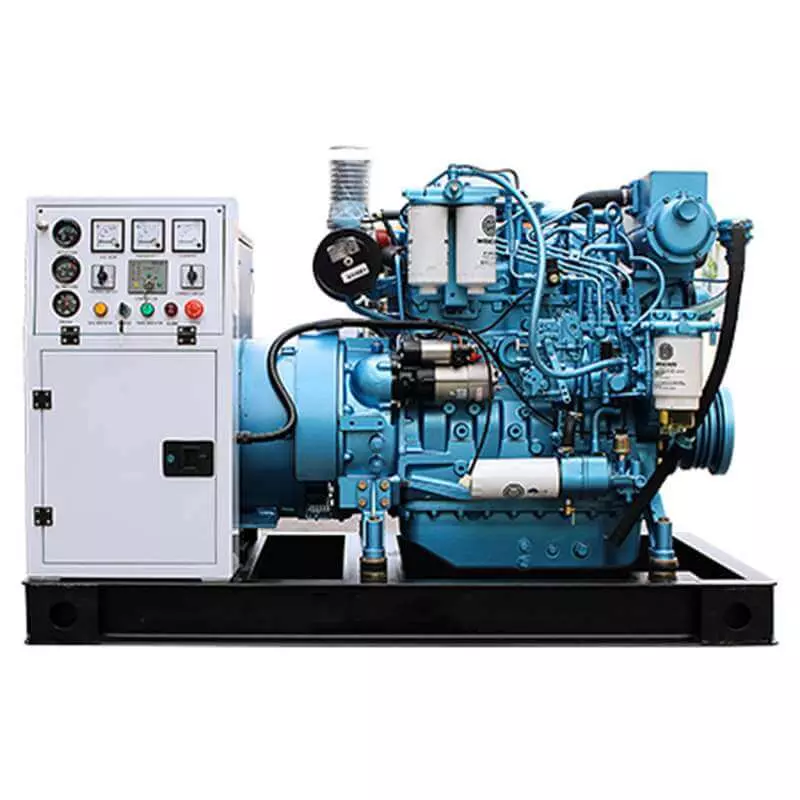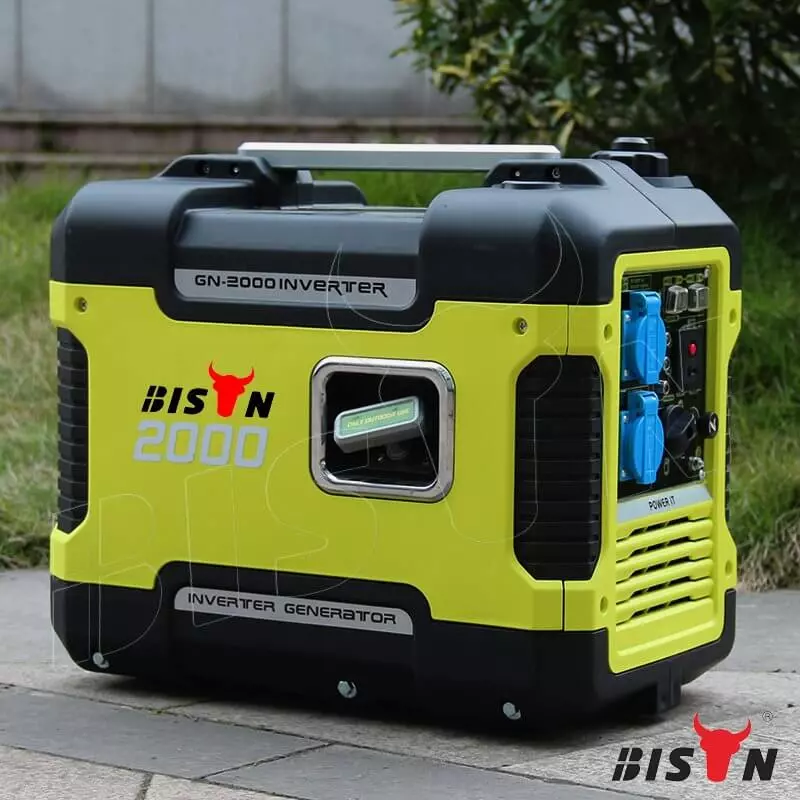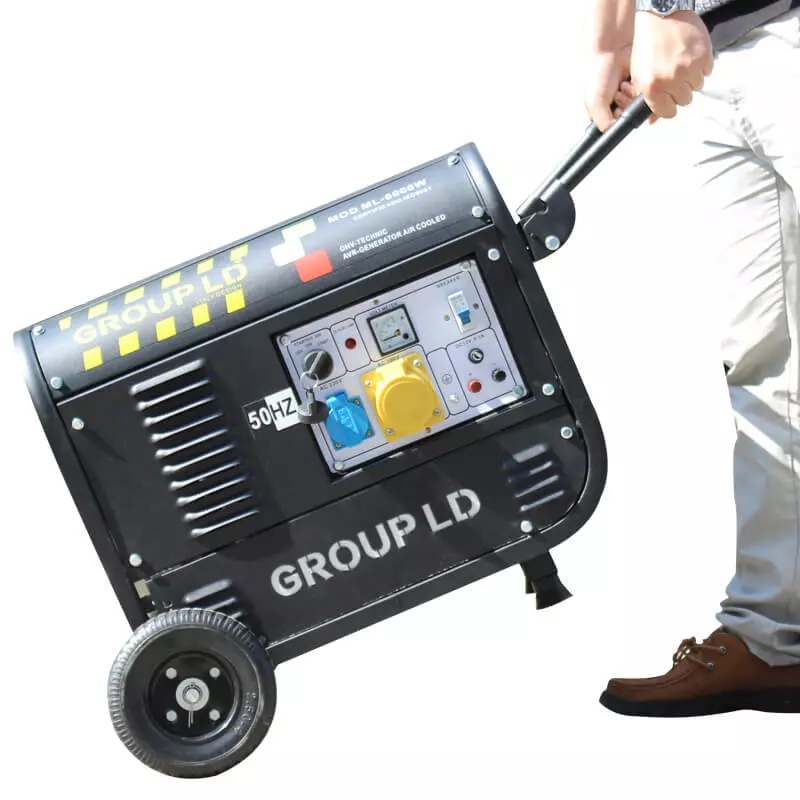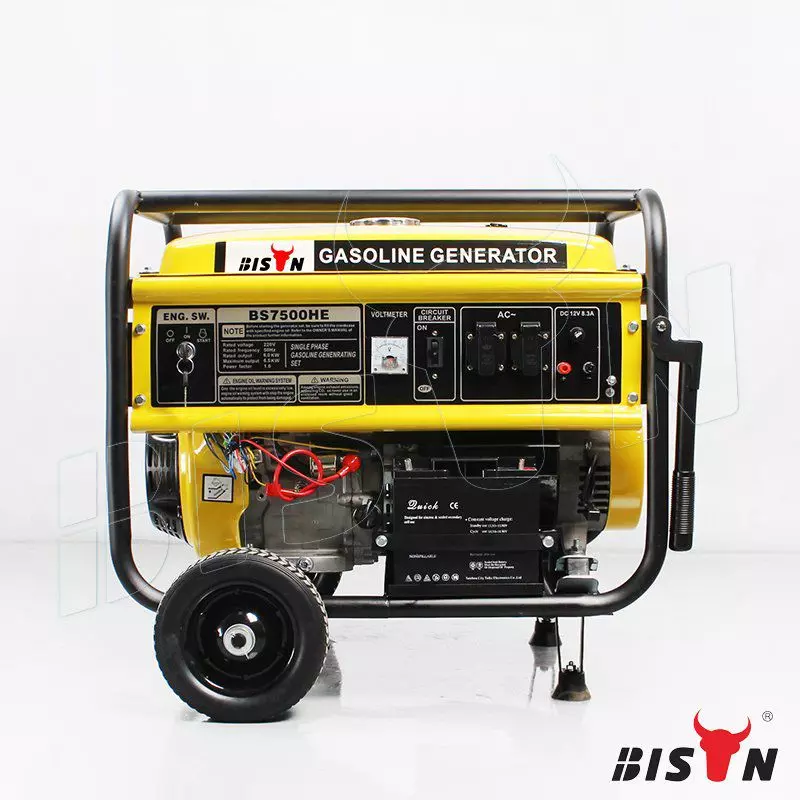Generator running watts vs. starting watts
2023-06-16
Table of content
If you're in the market for a new generator or looking to purchase generators for your business , you'll see two confusing terms in their catalogs. They are starting wattage and running wattage.
A generator's wattage is the amount of electricity it can generate. But what are generator starting watts or running watts? How do these parameters affect the performance of the generator? How do these terms affect the choice of generator size when purchasing?
In this generator starting watts vs. running watts comparison guide, let BISON tell you everything need to know about generator starting and running watts. After reading this guide, you'll understand how vital these power ratings are when purchasing.
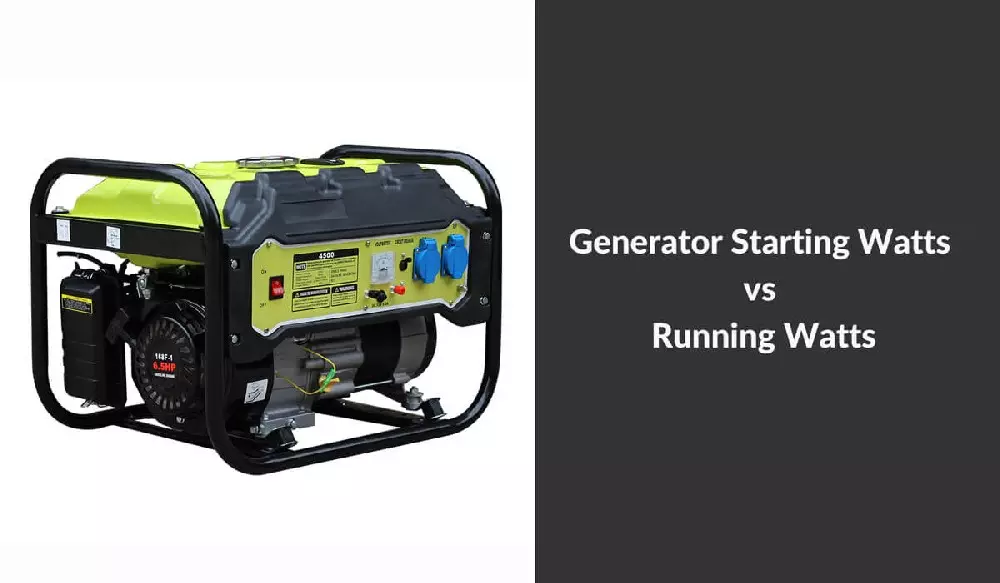
A brief note about generator watts
When you're browsing generators, the first thing you need to look at is the power output of your generator. This is where the confusion begins. With most generators, you'll see two ratings related to power. Different manufacturers have different names for power-related terms.
The first is the rated watts. This is the generator's power output for all appliances to run correctly. It is also known as continuous watts or operating watts.
Another rating is surge watts, also known as peak watts or starting watts. Generators provide short bursts of high power to start motor-based equipment.
Typically, a generator's starting or peak wattage rating will exceed its operating or rated wattage.
Here, the terms rated watts and peak watts are usually associated with generators, while the terms starting watts and running watts are associated with the equipment or appliances that we want to use the generator to power.
What is the wattage of a device?
Before starting and running wattage, let's look at a device or appliance's wattage and how to calculate it.
Such as the United States, typical household power is 120V AC. When you plug an electrical device such as iron into an outlet, it draws some current to operate, which we call the device's amperage (we measure it in amperes).
Now, if the iron draws 20 amps, we can calculate the power in watts (also known as the appliance's wattage) by multiplying the voltage by the current.
Since the mains voltage is 120V in this example, the iron wattage is 120V × 20A = 2,400 watts (or 2,400W for short).
Now take the refrigerator as an example. When you turn it on, the refrigerator draws two to three times the power it needs to run normally. Since the voltage is fixed at 120V, the fridge will experience a massive surge in amperage that lasts only a few seconds.
The power required by motor-based devices when they start up or when you turn them on is often referred to as the device's starting watts. It is also known as surge watts because this high power draw lasts only for a short time.
Once the refrigerator starts and the motor or compressor, in this case, stabilizes, the power consumption will drop to a more normal value. This, we call the running power of the device.
We say that all "motor-based" devices have a starting wattage. Is this real? Yes. Air conditioners, refrigerators (or freezers), heat pumps, water pumps, dryers, washers, dishwashers, garage door openers, and more all contain some form of electric motor.
When you start any of these motor-driven devices, there's a two-to-three-second surge in power as the motor tries to pick up speed. This power will be two to three times the running watts (or even more).
This high power consumption is the high surge current drawn by the motor starting from a stopped position. Once the motor reaches its ideal speed, the current drops rapidly and remains roughly constant.
This "surge" current concept applies only to motors and, thus, to all motor-based devices.
So in the iron example earlier, when we said 2,400 watts, it was the running watts of the iron, no starting watts in this case. Likewise, other devices and appliances, such as light bulbs, heaters, coffee makers, microwave ovens, toasters, televisions, computers, speaker systems, etc., do not have starting wattages, only running wattages.
What size generator do I need?
An important thing you need to check before connecting any motor-based equipment to a generator is whether the generator can provide the necessary surge power. You can calculate the power requirement with the help of the running watts and starting watts of all the equipment, calculating the generator's size.
Say you want to use your generator to power a few incandescent lights, a microwave, a refrigerator, a 43-inch LCD TV, and a small portable air conditioner. For example, you calculate the total power requirement for all the devices you want to run as about 5,000 watts. Here are a couple of motor-based devices (refrigerators and air conditioners).
You need to consider the starting wattage of the two devices to get a total power consumption of 6,000 watts. You are in trouble if you purchase a 5000-watt generator by this calculation.
If you don't account for surge power or starting wattage of your equipment, you can damage your equipment, your generator, or, worst case, start a fire. Therefore, always use the device or appliance's starting wattage (surge or peak power) to calculate generator size.
People also ask
How much-starting watts does a refrigerator use?
Most modern refrigerators require 500 to 2,000 watts of surge power. This depends on your refrigerator's size, year, model, and brand. A typical household refrigerator with a freezer needs 700-800 watts to start. The latest models may only require 400-500 running watts.
How to find the running and starting watts of any appliance?
Before calculating the running and starting watts of a backup or portable generator, it is essential to understand the type of electrical load they represent. It will help determine if you need additional starting wattage.
The three main types of electrical loads are:
Resistive Load: The most basic type of load, used efficiently to convert electrical current into heat.
Capacitive Loads: These loads are stored in device components and are common in electronic circuits.
Inductive Load: This type of load is produced by all equipment containing moving parts and any equipment with coils that generate a magnetic field.
Appliances under resistive loads include kettles, light bulbs, radiant heaters, etc., and anything under capacitive loads, including cell phone chargers, laptops, etc. Calculating the wattage needed for a backup or portable generator is easy. In both categories, your device does not require additional starting power. Therefore, you can calculate the necessary operating power by multiplying amps by volts.
Equipment that falls into the category of inductive loads usually has a motor or compressor. In this case, BISON recommends contacting the equipment manufacturer for running and starting watts and working with a local electrician who can provide these answers.
What happens when a generator is overloaded?
A circuit is overloaded when a device draws more current than the circuit can safely supply. Since the power source already determines the voltage, high-wattage devices will try to draw power by drawing more current. If the generator can't handle the amount of current flowing through it, it will generate electrical resistance in the form of heat. With high currents constantly flowing, many things can happen. The heat will continue to build up until the generator burns out or, worse, starts a fire.
Sometimes, when a generator is overloaded, its voltage drops. This can cause permanent damage to the generator and cause other equipment to run on the generator to compensate for overdrawing current, causing overheating. An overloaded generator may start producing intermittent power, damaging any equipment connected to the generator.
Signs of an overloaded generator include overheating, soot in the exhaust, and unusual sounds. Most modern generators install circuit breakers to detect overloads and shut them off automatically. But if your generator doesn't have a circuit breaker, watch for signs of overload, shut down the generator immediately, and wait for it to cool. Restart with a light load to make sure the generator is not damaged.
In conclusion
In conclusion, understanding the difference between generator starting watts and running watts is critical to choosing the right generator for your specific needs.
At BISON, we understand the importance of having a reliable power supply that can meet a variety of business and application needs. That's why we work closely with our suppliers to ensure that all generator parameters are accurate and within their specifications. We offer a wide range of generators in different power capacities to meet the unique needs of different industries.
We invite you to explore our extensive range of BISON generators. If you have any questions or require further assistance, please do not hesitate to contact our friendly and knowledgeable team.

